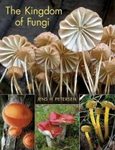About this book
This new edition of Fungi in Ecosystem Processes continues the unique approach of examining the roles of fungi from the perspective of ecosystem functions. It explores how fungi have adapted to survive within particular constraints, how they help to maintain homeostasis in ecosystems, how they facilitate resistance to perturbations, and how they influence the communities of other organisms.
Updated and revised, the second edition
- Expands the section on plant pathogens, invasive species, and insect–fungal interactions
- Provides more extensive coverage on insect–fungal interactions, including entomopathogens, the links between entomopathogens and endophytes, and symbiotic and mutualistic interactions
- Adds a new section on fungi in the built environment
- Presents new material on below-ground to above-ground interactions mediated through fungi, such as mycorrhizal signaling systems for herbivory defense
Fungi in Ecosystem Processes also includes expanded coverage of the role of fungi in suppressive soils, aquatic and marine fungi, modern methods of following food chains in fungal–invertebrate trophic interactions, and the physiology of nutrient uptake by mycorrhizae.
A necessary update and expansion to previous material, Fungi in Ecosystem Processes provides an essential reference on the current understanding of fungal roles in ecosystem processes. It also identifies directions for future study, including an emphasis on the need for further research on fungi in built environments.
Contents
Introduction
- Why Fungi?
- What Are Fungi?
- What Are Ecosystems and Ecosystem Functions?
- Specific Ecosystem Services Carried Out by Fungi
- Conclusions
- References
Making Nutrients Available for Primary Production
- Making Soils
- Breaking Down the Dead: Adding Fertility
- Where Does Soil Begin and End?
- Keeping Soils Together
- Nutrient Availability in Aquatic and Marine Ecosystems
- Conclusions
- References
Role of Fungi in Promoting Primary Production
- Lichens as Primary Producers
- Mycorrhizae Help Primary Production
- Succession and Plant Community Composition
- Plant Communities
- Plugging into the Hyphal Network
- Interactions with Other Microbes
- Mycorrhizae and Stress Tolerance
- Mycorrhizae in Aquatic and Estuarine Systems
- Fungal Endophytes and Primary Production
- Conclusion
- References
Role of Fungi in Reducing Primary Production
- Pathogenic Fungi and Natural Plant Communities
- Pathogens and Agroecosystems
- Interactions between Mycorrhizae and Plant Pathogens
- Saprotroph–Pathogen Interactions—Biocontrol
- Allelopathy
- Conclusions
- References
Fungi and Secondary Productivity
- Fungi in Diet of Vertebrates
- Fungi in Diet of Invertebrates
- Influence of Faunal Grazing on Decomposition
- Influence of Faunal Grazing on Mycorrhizal Function
- Influence of Fauna on Fungal Dispersal
- Influence of Invertebrate Grazing on Fungal Pathogens
- Specific Fungal–Faunal Interactions
- Fungal–Faunal Interactions in Aquatic and Marine Ecosystems
- Conclusions
- References
Fungi as Animal Pathogens: Negative Impacts on Faunal Productivity
- Entomopathogens
- Nematode Pathogens and Predators
- Emerging Vertebrate Fungal Pathogens
- Pathogens in Aquatic and Marine Ecosystems
- Conclusion
- References
Fungal Interactions with Pollutants and Climate Change
- Fungi and Acidifying Pollutants
- Fungi and Heavy Metals
- Organic Pollutants
- Fungi and Radionuclides
- Fungi and Climate Change
- Conclusions
- References
Fungi in the Built Environment
- Decomposition of Fabric of Buildings
- Air Spora, Health Problems, and Molds on Structures
- Hot Spots of Fungal Activity Related to Environment
- Degradation of Artifacts
- Possible Protection of Artifacts
- Food Spoilage
- Conclusion
- References
Customer Reviews
Biography
John Dighton is a professor and Station Director of the Rutgers Pinelands Field Station, New Lisbon, New Jersey, USA.









































